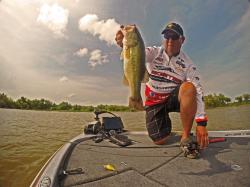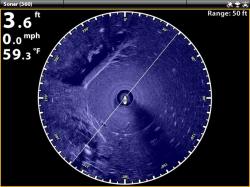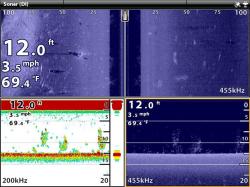These political jokes are funny, I don’t care who you are or who you support. Of course the names can be changed on any of them to your suiting!
The best description of Obamacare so far:
Remember when Nancy Pelosi said:
“We have to pass it, to find out what’s in it.”
A physician called into a radio show and said:
“That’s the definition of a stool sample”.
A lesson in irony:
The Food Stamp Program, administered by the U.S. Department of Agriculture, is proud to be
distributing the greatest amount of free meals and food stamps ever.
Meanwhile, the National Park Service, administered by the U.S.Department of the Interior,
asks us “Please Do Not Feed the Animals.”
Their stated reason for the policy is because the animals will grow dependent
on handouts and will not learn to take care of themselves.
This ends today’s lesson.
This email gently explains the difference in thinking between people with opposite outlooks.
A young woman was about to finish her first year of college.
Like so many others her age, she considered herself to be very liberal, and among other liberal ideals, was very much in favor of higher taxes to support more government programs, in other words redistribution of wealth.
She was deeply ashamed that her father was a rather staunch conservative, a feeling she openly expressed. Based on the lectures that she had participated in, and the occasional chat with a professor, she felt that her father had for years harbored an evil, selfish desire to keep what he thought should be his.
One day she was challenging her father on his opposition to higher taxes on the rich and the need for more government programs.
The self-professed objectivity proclaimed by her professors had to be the truth and she indicated so to her father. He responded by asking how she wasdoing in school.
Taken aback, she answered rather haughtily that she had a 4.0 GPA, and let him know that it was tough to maintain, insisting that she was taking a very difficult course load and was constantly studying, which left her no time to go out and party like other people she knew. She didn’t even have time for a boyfriend, and didn’t really have many college friends because she spent all her time studying.
Her father listened and then asked, “How is your friend Audrey doing?”
She replied, “Audrey is barely getting by. All she takes are easy classes, she never studies and she barely has a 2.0 GPA. She is so popular on campus; college for her is a blast. She’s always invited to all the parties and lots of times she doesn’t even show up for classes because she’s too hung over.”
Her wise father asked his daughter, “Why don’t you go to the Dean’s office and ask him to deduct 1.0 off your GPA and give it to your friend who only has a 2.0. That way you will both have a 3.0 GPA and certainly that would be a fair and equal distribution of GPA.”
The daughter, visibly shocked by her father’s suggestion, angrily fired back, “That’s a crazy idea, how would that be fair! I’ve worked really hard for my grades! I’ve invested a lot of time, and a lot of hard work! Audrey has done next to nothing toward her degree. She played while I worked mytail off!”
The father slowly smiled, winked and said gently, “Welcome to theconservative side of the fence.”
If you ever wondered what side of the fence you sit on, this is a great test!
If a conservative doesn’t like guns, he doesn’t buy one. If a liberal doesn’t like guns, he wants all guns outlawed.
If a conservative is a vegetarian, he doesn’t eat meat. If a liberal is a vegetarian, he wants all meat products banned for everyone.
If a conservative is down-and-out, he thinks about how to better his situation. A liberal wonders who is going to take care of him.
If a conservative doesn’t like a talk show host, he switches channels. Liberals demand that those they don’t like be shut down.
If a conservative is a non-believer, he doesn’t go to church. A liberal non-believer wants any mention of God and Jesus silenced.
If a conservative decides he needs health care, he goes about shopping for it, or may choose a job that provides it. A liberal demands that the rest ofus pay for his.
If a conservative reads this, he’ll forward it so his friends can have agood laugh. A liberal will delete it because he’s “offended.”
Well, I forwarded it to you!
Woman Shot in her own Driveway
Linda Burnett, 26, a resident of San Diego, was visiting her in-laws
and, while there, went to a nearby supermarket to pick up some
groceries.
Later, her husband noticed her sitting in her car in the driveway
with the windows rolled up and her eyes closed, with both hands behindthe back of her head.
He became concerned and walked over to the car. He noticed that
Linda’s eyes were now open and she looked very strange. He asked herif she was okay, and Linda replied that she had been shot in the backof the head and had been holding her brains in for over an hour.
The husband called the paramedics, who broke into the car because
the doors were locked and Linda refused to remove her hands from her
head.
When they finally got in, they found that Linda had a wad of bread
dough on the back of her head.
A Pillsbury biscuit canister had exploded from the heat, making a
loud noise that sounded like a gunshot, and the wad of dough hit her
in the back of her head.
When she reached back to find out what it was, she felt the dough
and thought it was her brains. She initially passed out, but quickly
recovered.
Linda is a blond, a Democrat, and an Obama supporter, but that
could all be a coincidence.
The defective biscuit canister was analyzed and the expiration date
was from 2008,so it was determined to be Bush’s fault.
So far, published Obamacare regs 8 times longer than the Bible. And they all add up to one commandment: “Thou better not get sick”. Fred Thompson
My Gun
Today I swung my front door wide open and placed my Remington 870 shotgun right in the doorway. I gave it 6 shells, then left it alone and went about my business.
While I was gone, the mailman delivered my mail, the neighbor boy across the street mowed the yard, a girl walked her dog down the street, and quite a few cars stopped at the stop sign right in front of our house.
After about an hour, I checked on the gun. It was still sitting there, right where I had left it. It hadn’t moved itself outside. It certainly hadn’t killed anyone, even with the numerous opportunities it had been presented to do so. In fact, it hadn’t even loaded itself.
Well you can imagine my surprise, with all the media hype about how dangerous guns are and how they kill people. Either the media is wrong, and it’s the misuse of guns by PEOPLE that kills people, or I’m in possession of the laziest gun in the world.
Alright, well I’m off to check on my spoons.
I hear they’re making people fat.
JEWISH QUARTERBACK
The coach had put together the perfect team for the Chicago Bears. The only thing that was missing was a good quarterback. He had scouted all the colleges and even the Canadian and European Leagues, but he couldn’t find a ringer who could ensure a Super Bowl win.
Then one night while watching CNN he saw a war-zone scene in the West Bank . In one corner of the background, he spotted a young Israeli soldier with a truly incredible arm. He threw a hand-grenade straight into a 15th story window 100 yards away. KABOOM!
He threw another hand-grenade 75 yards away, right into a chimney.
KA-BLOOEY!
Then he threw another at a passing car going 90 mph.
BULLS-EYE!
“I’ve got to get this guy!” Coach said to himself. “He has the perfect arm!”
So, he brings him to the States and teaches him the great game of football. And the Bears go on to win the Super Bowl.
The young man is hailed as the great hero of football, and when the coach asks him what he wants, all the young man wants is to call his mother.
“Mom,” he says into the phone, “I just won the Super Bowl!”
“I don’t want to talk to you, the old woman says.”You are not my son!”
“I don’t think you understand, Mother,” the young man pleads. “I’ve won the greatest sporting event in the world. I’m here among thousands of my adoring fans.”
“No! Let me tell you!” his mother retorts. “At this very moment, there are gunshots all around us. The neighborhood is a pile of rubble. Your two brothers were beaten within an inch of their lives last week, and I have to keep your sister in the house so she doesn’t get raped!” The old lady pauses, and then tearfully says,………
“I will never forgive you for making us move to Chicago !!
Preacher’s Son
An old country preacher had a teenage son, and it was
getting high time the boy gave some thought to choosing a
profession. Like many young men his age, the boy didn’t
really know what he wanted to do, and he didn’t seem too
concerned about it.
One day, while the boy was away at school, his father
decided to try an experiment. He went into the boy’s room
and placed on his study table four objects:
1. A Bible,
2. A silver dollar,
3. A bottle of whiskey,
4. And a Playboy magazine.
“I’ll just hide behind the door,” the old preacher said to
himself, “and when he comes home from school, I’ll see which
object he picks up. If it’s the Bible, he’s going to be a
preacher like me, and what a blessing that would be! If he
picks up the dollar, he’s going to be a business man, and
that would be okay, too. But if he picks up the bottle, he’s
going to be a no-good drunken bum, and Lord, what a shame
that would be. And worst of all, if he picks up that
magazine, he’s going to be a skirt-chasing womanizer.”
The old man waited anxiously and soon heard his son’s
footsteps as he entered the house whistling and headed for
his room. The boy tossed his books on the bed, and as he
turned to leave the room, he spotted the objects on the
table. He walked over to inspect them, looking at each for
several minutes. Finally, he picked up the Bible and placed
it under his arm. He picked up the silver dollar and dropped
into his pocket. He uncorked the bottle and took a big
drink, while he admired this month’s centerfold.
“Lord have mercy!” the old preacher prayed. “He’s going into
politics!!”
Detroit (that is a joke in one word!)
Police in Detroit announced the discovery of an arms cache of 200 semi-automatic rifles with 25,000
rounds of ammunition, 200 pounds of heroin, 5 million in forged US banknotes and 25 trafficked
Latino prostitutes — all in a semi-detached house behind the Public Library on Woodward Ave.
Local residents were stunned, and a community spokesman said:
“We’re all shocked; we never knew we had a library.”
Hospital Waiting Room
In the hospital the relatives gathered in the waiting room, where a family
member lay gravely ill. Finally, the doctor came in looking tired and somber.
“I’m afraid I’m the bearer of bad news, he said as he surveyed the worried
faces. The only hope left for your loved one at this time is a brain
transplant. It’s an experimental procedure, very risky, but it is the
only hope. Insurance will cover the procedure, but you will have to pay for
the BRAIN.”
The family members sat silent as they absorbed the news. After a time,
someone asked, ‘How much will a brain cost?
The doctor quickly responded, “$5,000 for a Democrat’s brain; $500 for a
Republican’s brain.”
The moment turned awkward. Some of the Democrats actually had to ‘try’ to
not smile, avoiding eye contact with the Republicans. A man unable to
control his curiosity, finally blurted out the question everyone wanted to ask, “Why is the Democrat’s brain so much more than a Republican’s brain?”
The doctor smiled at the childish innocence and explained to the entire
group, “It’s just standard pricing procedure. We have to price the
Republicans brains a lot lower because they’ve been USED.”







